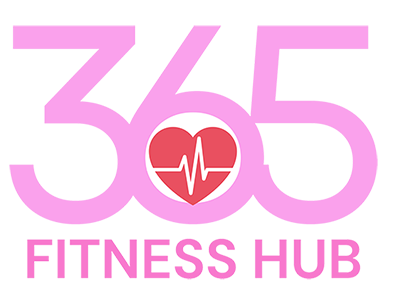Stress is an inevitable part of life, but the way we handle it can make a significant difference in how we feel. One of the most effective and accessible ways to combat stress is through breathing exercises. These simple techniques can help calm the nervous system, promote relaxation, and reduce the physical and mental tension that stress creates. Here are some powerful breathing exercises to try when you’re feeling stressed:
- Deep Belly Breathing (Diaphragmatic Breathing)
Deep belly breathing, also known as diaphragmatic breathing, is one of the simplest and most effective ways to calm the body and mind. This technique encourages you to breathe deeply into your diaphragm rather than shallowly into your chest, helping activate the body’s relaxation response.
How to Do It:
- Sit or lie down in a comfortable position.
- Place one hand on your chest and the other on your abdomen.
- Breathe in deeply through your nose, allowing your belly to expand and your hand to rise. Your chest should remain relatively still.
- Slowly exhale through your mouth, feeling your belly fall as you release the air.
- Repeat this process for 5-10 minutes, focusing on the rise and fall of your belly with each breath.
Why It Helps: Deep belly breathing activates the parasympathetic nervous system, which calms the body and reduces stress levels.
- 4-7-8 Breathing
The 4-7-8 breathing technique, developed by Dr. Andrew Weil, is a simple yet powerful method for quickly reducing stress and promoting relaxation. By controlling your breath with a set rhythm, this exercise can help slow your heart rate and quiet your mind.
How to Do It:
- Sit in a comfortable position with your back straight.
- Close your eyes and breathe out fully through your mouth, making a whooshing sound.
- Inhale quietly through your nose for 4 counts.
- Hold your breath for 7 counts.
- Exhale completely through your mouth for 8 counts, making a whooshing sound.
- Repeat the cycle 3-4 times.
Why It Helps: The rhythm of the breath, especially with the long exhale, helps reduce the body’s stress response and encourages relaxation.
- Box Breathing (Square Breathing)
Box breathing is a simple and effective technique used by athletes, military personnel, and individuals experiencing stress. It involves inhaling, holding, exhaling, and holding again in equal parts, creating a “box” pattern. This exercise can help you regain focus, calm your nerves, and re-center yourself.
How to Do It:
- Sit comfortably with your back straight and shoulders relaxed.
- Inhale through your nose for a count of 4.
- Hold your breath for a count of 4.
- Exhale slowly through your mouth for a count of 4.
- Hold your breath again for a count of 4.
- Repeat for 5-10 minutes.
Why It Helps: The structured rhythm of box breathing enhances concentration, calms the mind, and helps you feel grounded during stressful situations.
- Alternate Nostril Breathing (Nadi Shodhana)
Alternate nostril breathing is a yogic technique that helps balance the body’s energy, calm the mind, and reduce stress. This exercise involves alternating your breath between the left and right nostrils, which can create a sense of balance and inner peace.
How to Do It:
- Sit in a comfortable position with your spine straight and shoulders relaxed.
- Use your right thumb to close your right nostril.
- Inhale deeply through your left nostril.
- Close your left nostril with your right ring finger and release your right nostril.
- Exhale slowly through your right nostril.
- Inhale deeply through your right nostril.
- Close your right nostril with your thumb and release your left nostril.
- Exhale slowly through your left nostril.
- Continue alternating nostrils for 5-10 minutes.
Why It Helps: Alternate nostril breathing promotes mental clarity, balances the nervous system, and calms the body and mind during stressful times.
- Lion’s Breath (Simhasana Pranayama)
Lion’s Breath is a fun and invigorating breathing technique that helps release tension, especially in the face, jaw, and neck. This exercise can be a great way to relieve physical stress and express frustration.
How to Do It:
- Sit comfortably with your knees bent and your feet flat on the floor.
- Place your hands on your knees with your fingers spread wide.
- Inhale deeply through your nose.
- Open your mouth wide, stick your tongue out toward your chin, and exhale forcefully through your mouth with a “ha” sound, as if you’re roaring like a lion.
- Inhale again through your nose and repeat the exhale 5-10 times.
Why It Helps: Lion’s Breath helps release pent-up stress and tension, especially in the face and jaw, while also promoting a sense of playfulness and lightness.
- Progressive Relaxation with Breathing
Progressive relaxation combines deep breathing with a body scan technique to release physical tension. This method helps you focus on each muscle group and consciously relax your body, leading to greater overall relaxation and stress relief.
How to Do It:
- Sit or lie down in a comfortable position.
- Start by taking a deep breath and focus on tensing the muscles in your toes for 5 seconds. Hold your breath while keeping the tension.
- Slowly exhale and release the tension in your toes as you breathe out.
- Move up to the next muscle group (e.g., feet, legs, abdomen, hands, arms, shoulders, face), tensing and relaxing each one.
- Continue until you’ve worked your way through the whole body, focusing on releasing tension with each breath.
Why It Helps: Progressive relaxation helps reduce muscle tension, calms the body, and focuses the mind, making it effective for reducing stress and anxiety.
- Breathing with Visualization
Combining breath with visualization can be a powerful tool to reduce stress and increase calm. The mind and body are interconnected, and by guiding your breath with peaceful imagery, you can promote relaxation.
How to Do It:
- Sit or lie down in a comfortable position and close your eyes.
- Take a deep breath in, imagining that you are inhaling calmness, light, or positive energy.
- As you exhale, imagine releasing all the stress, tension, and negativity from your body.
- Continue breathing deeply, visualizing the calmness filling your body with each inhale and stress leaving with each exhale.
- Focus on the imagery and the rhythm of your breath for 5-10 minutes.
Why It Helps: Visualization paired with deep breathing can activate the body’s relaxation response, reduce cortisol levels, and promote a sense of well-being.
Conclusion
Breathing exercises are a simple yet powerful way to manage stress and promote relaxation. Whether you need to quickly calm down during a hectic day or engage in a mindful practice to reduce long-term anxiety, these exercises can be effective tools for restoring balance. The best part is that they can be done anywhere and at any time, making them perfect for anyone who experiences stress. By practicing these breathing techniques regularly, you’ll improve your ability to stay calm, focused, and centered, no matter what life throws your way.

